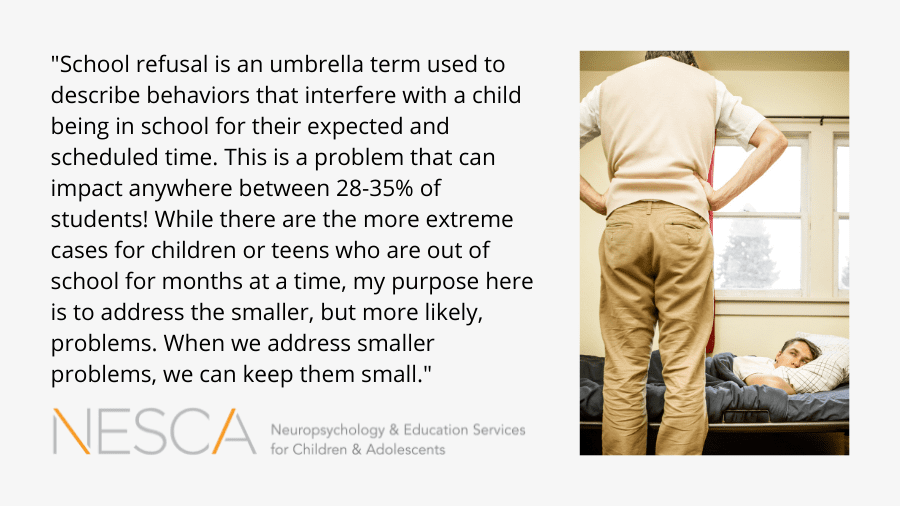
 By: Alissa Talamo, PhD
By: Alissa Talamo, PhD
Pediatric Neuropsychologist, NESCA
Reading 20 minutes per day has been shown to have many positive benefits. Did you know…?
- Children who read 20 minutes a day/5 days a week are exposed to 1.8 million words in one school year. Compare this to students who read 5 minutes per day – they will be exposed to 282,000 words per school year.
- Reading helps foster empathy – a child experiences “walking in someone else’s shoes.”
- Children are exposed to different ideas and cultures.
- Reading also improves critical thinking.
- Reading increases knowledge of correct syntax and grammar, along with robust vocabulary knowledge, resulting in improved writing skills.
- Students who read 20 minutes per day score significantly higher on standardized tests of reading.
- Reading with your child, or having them read independently before bed, can help them to relax and wind down from their day.
It is important to recognize that despite all our good intentions, sometimes students are reluctant to read on their own. This reluctance can come from different reasons, such as difficulty reading, not yet knowing the types of books they would enjoy, or even that they would simply rather be playing video games or be on social media. To help make reading more attractive to your child, there are several things you can try:
- Let the child choose what they are reading – help them find books that are about an area of high interest to them (anything from sports to fashion to history – all is fair game!).
- If the book they are interested in is above their reading level, you can read to them (model the page) and then have them read it back to you.
- Allow them access to audio books, and they can follow along with the text.
- Encourage different types of reading material (comics, graphic novels, magazines, traditional books, etc.).
- Look for book series – once they enjoy one, they will often want to read the rest!
Getting your child to read is not always easy. However, allowing them to read high interest material, asking them questions to help them interact with the text, and modeling that reading can be fun is a great start!
If your child demonstrates difficulties improving their reading skills, reach out to their teacher and discuss if there are any underlying concerns (visual issues, such as difficulty tracking; reading challenges, such as reduced phonemic awareness, etc.). If you continue to have concerns, consider having your child evaluated by a reading specialist or pediatric neuropsychologist to ensure that such an important skill is supported and developed as your child continues through school and beyond.
Sources
https://www.honorsgradu.com/importance-of-reading-20-minutes-a-day/
https://www.k12reader.com/why-read-20-minutes-a-day/
https://www.understood.org/articles/en/14-ways-to-encourage-your-grade-schooler-to-read
About the Author

With NESCA since its inception in 2007, Dr. Talamo had previously practiced for many years as a child and adolescent clinical psychologist before completing postdoctoral re-training in pediatric neuropsychology at the Children’s Evaluation Center.
After receiving her undergraduate degree from Columbia University, Dr. Talamo earned her doctorate in clinical health psychology from Ferkauf Graduate School of Psychology and the Albert Einstein College of Medicine at Yeshiva University.
She has given a number of presentations, most recently on “How to Recognize a Struggling Reader,” “Supporting Students with Working Memory Limitations,” (with Bonnie Singer, Ph.D., CCC-SLP of Architects for Learning), and “Executive Function in Elementary and Middle School Students.”
Dr. Talamo specializes in working with children and adolescents with language-based learning disabilities including dyslexia, attentional disorders, and emotional issues. She is also interested in working with highly gifted children.
Her professional memberships include MAGE (Massachusetts Association for Gifted Education), IDA (International Dyslexia Association), MABIDA (the Massachusetts division of IDA) and MNS (the Massachusetts Neuropsychological Society).
She is the mother of one teenage girl.
To book a consultation with Dr. Talamo or one of our many other expert neuropsychologists, complete NESCA’s online intake form.
Neuropsychology & Education Services for Children & Adolescents (NESCA) is a pediatric neuropsychology practice and integrative treatment center with offices in Newton, Massachusetts, Plainville, Massachusetts, and Londonderry, New Hampshire, serving clients from preschool through young adulthood and their families. For more information, please email info@nesca-newton.com or call 617-658-9800.


 unique pattern of strengths and weaknesses to best formulate a plan for intervention and success. With experiences providing therapy and assessments, Dr. Creedon bridges the gap between testing data and therapeutic services to develop a clear roadmap for change and deeper of understanding of individual needs.
unique pattern of strengths and weaknesses to best formulate a plan for intervention and success. With experiences providing therapy and assessments, Dr. Creedon bridges the gap between testing data and therapeutic services to develop a clear roadmap for change and deeper of understanding of individual needs.








Connect with Us